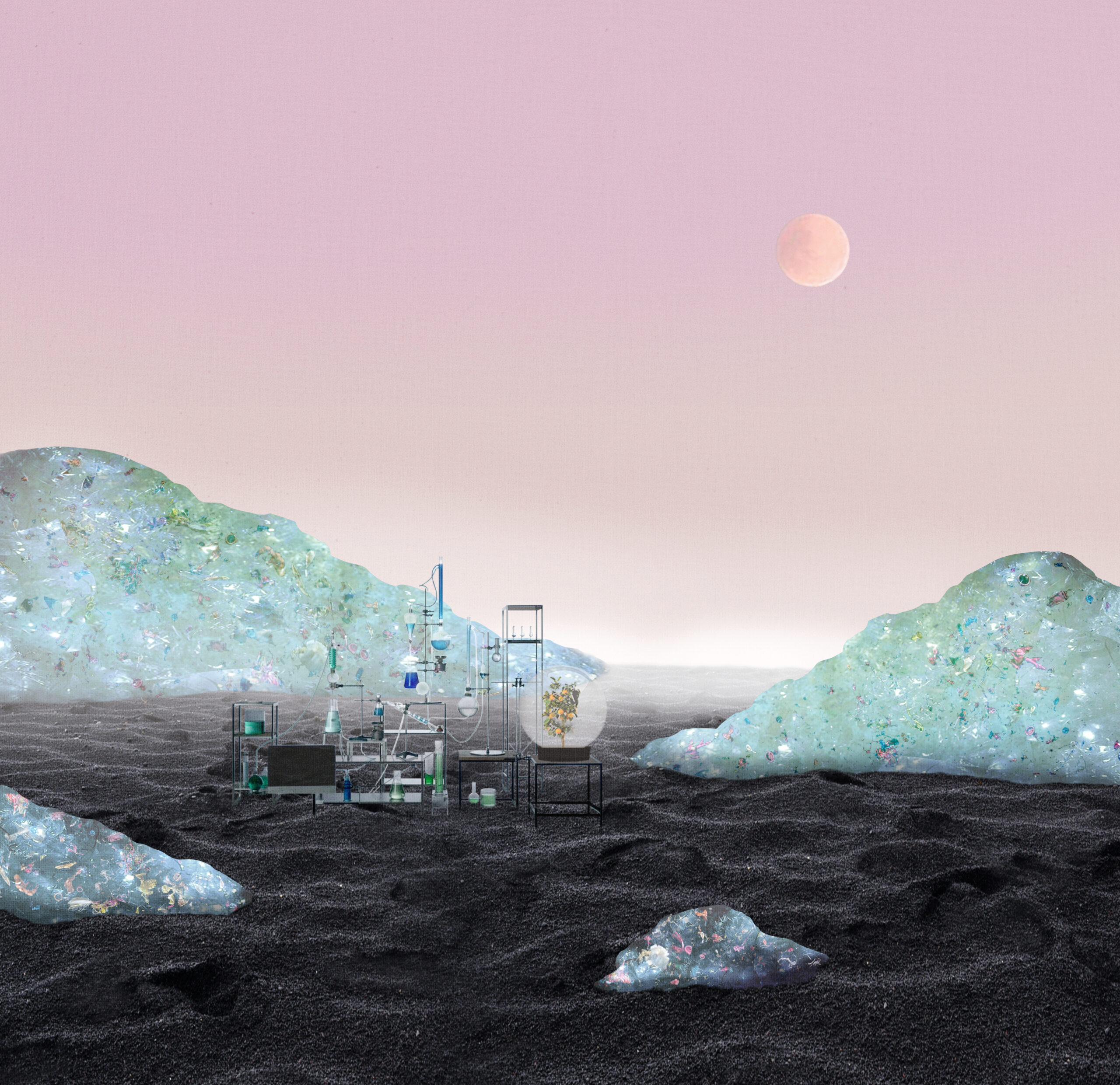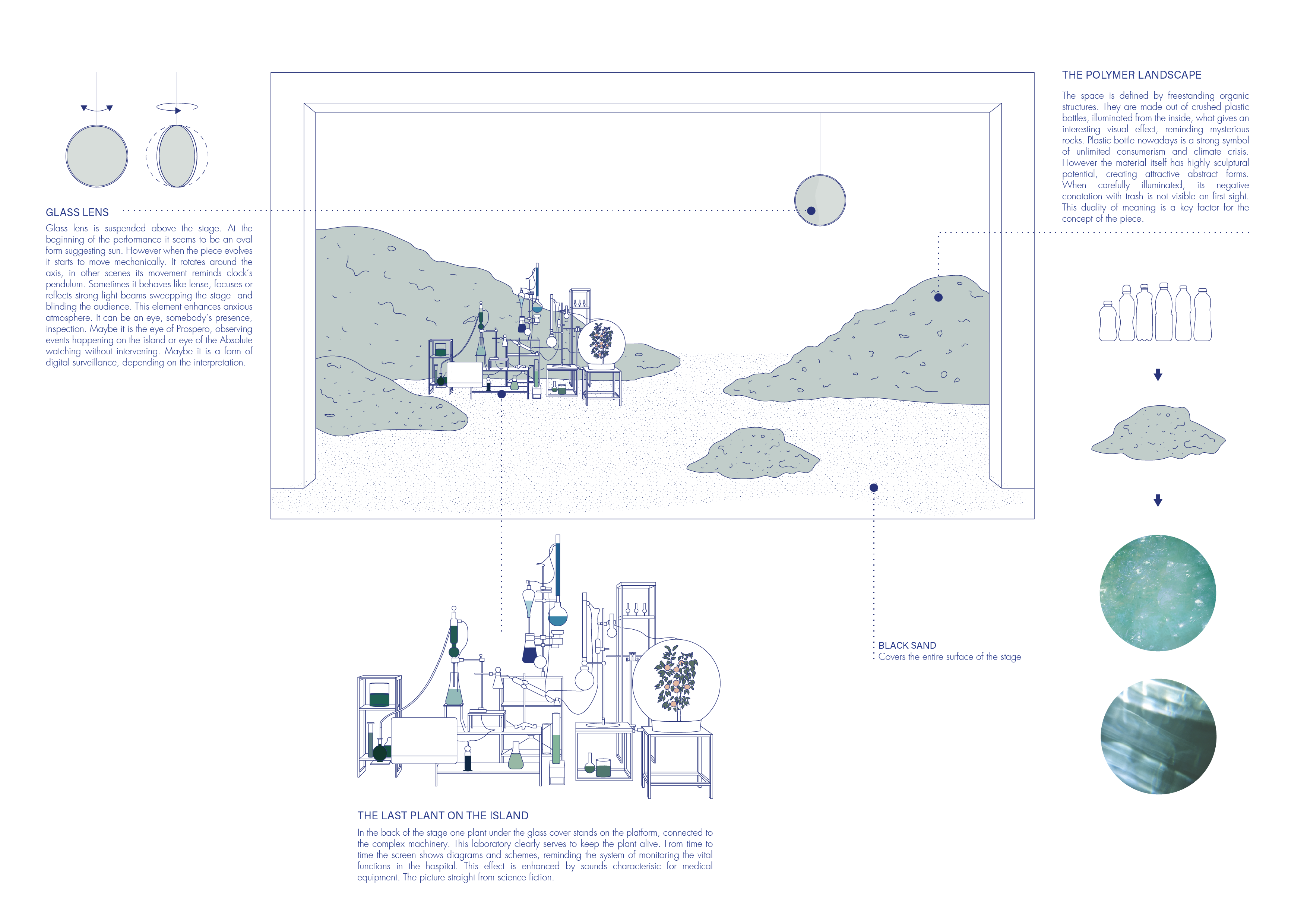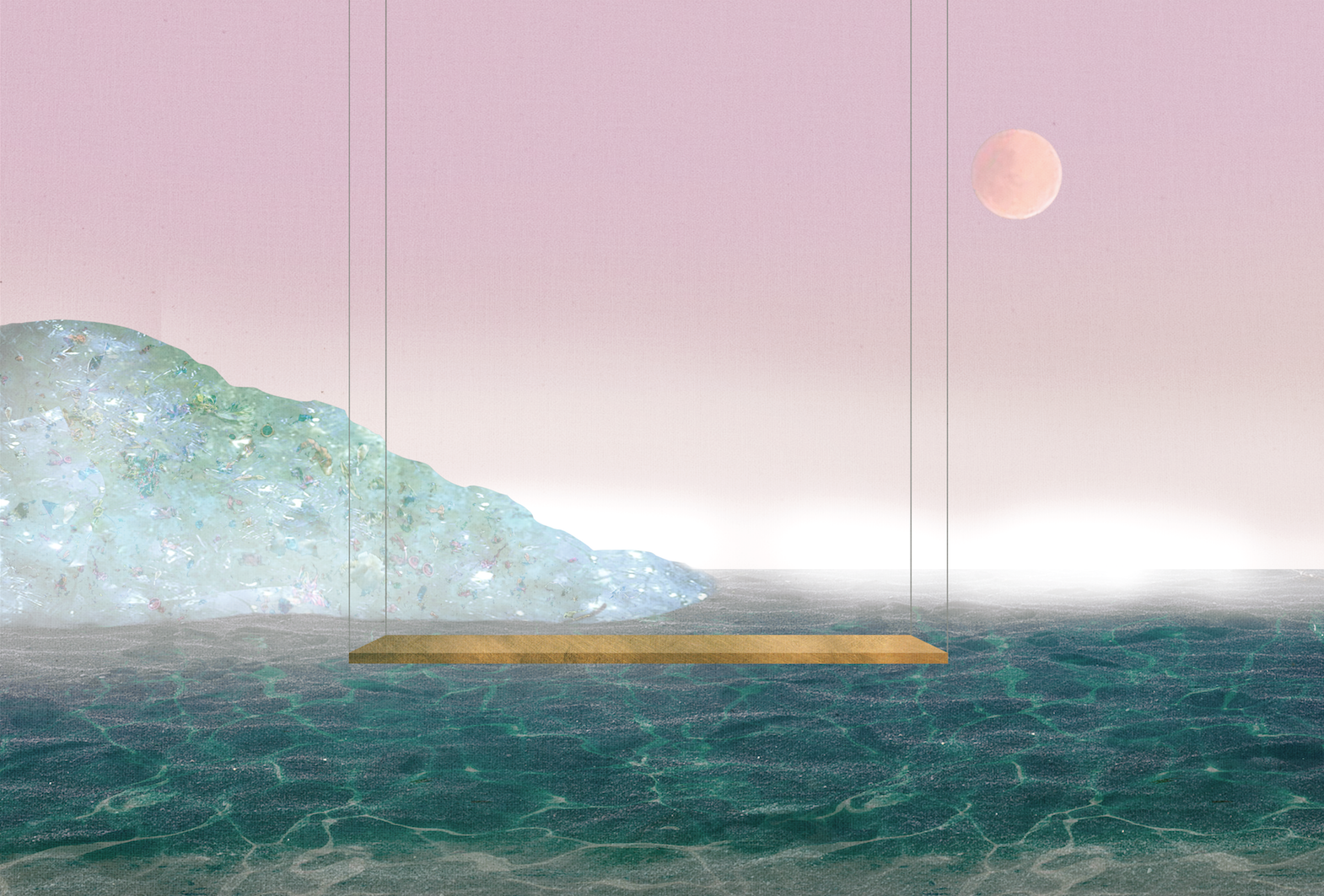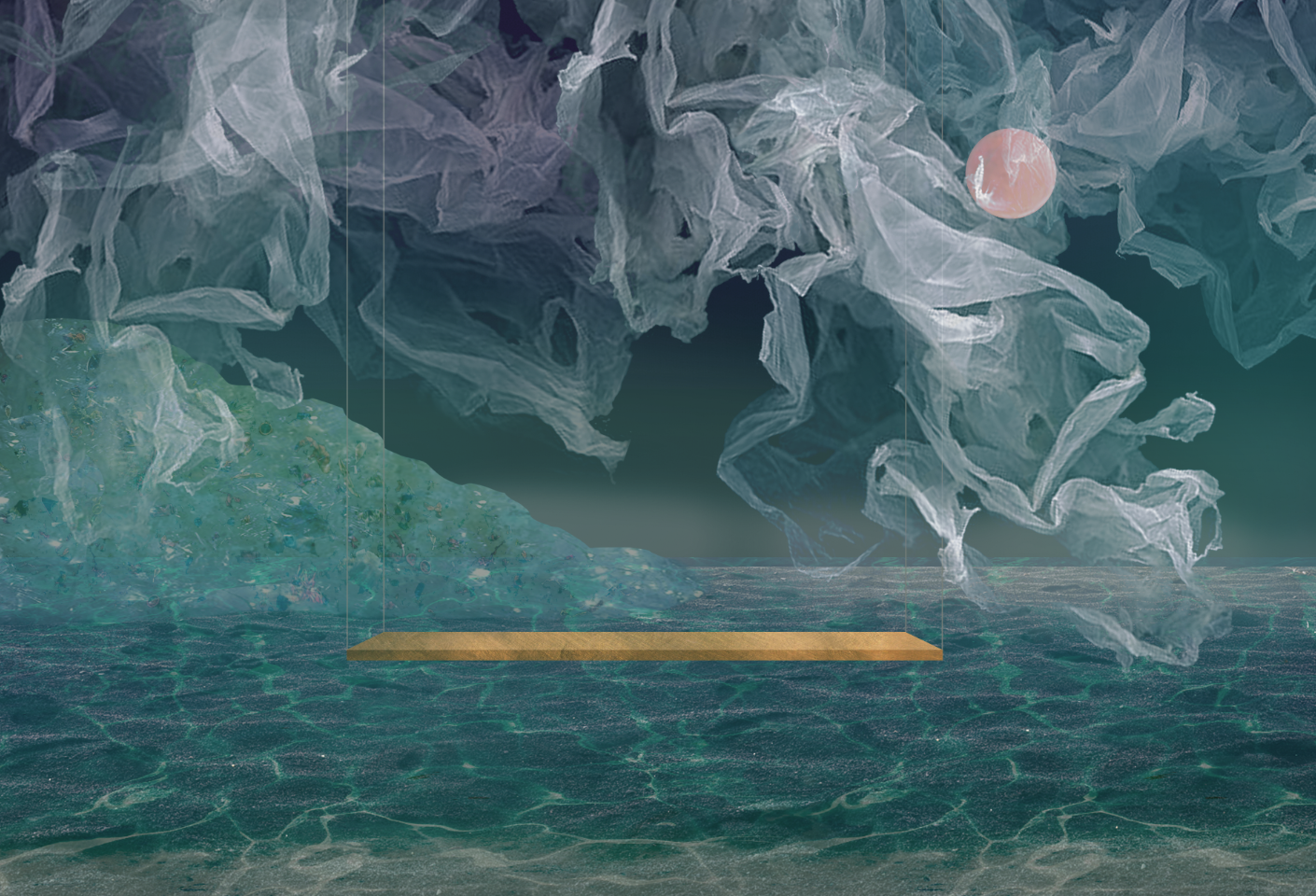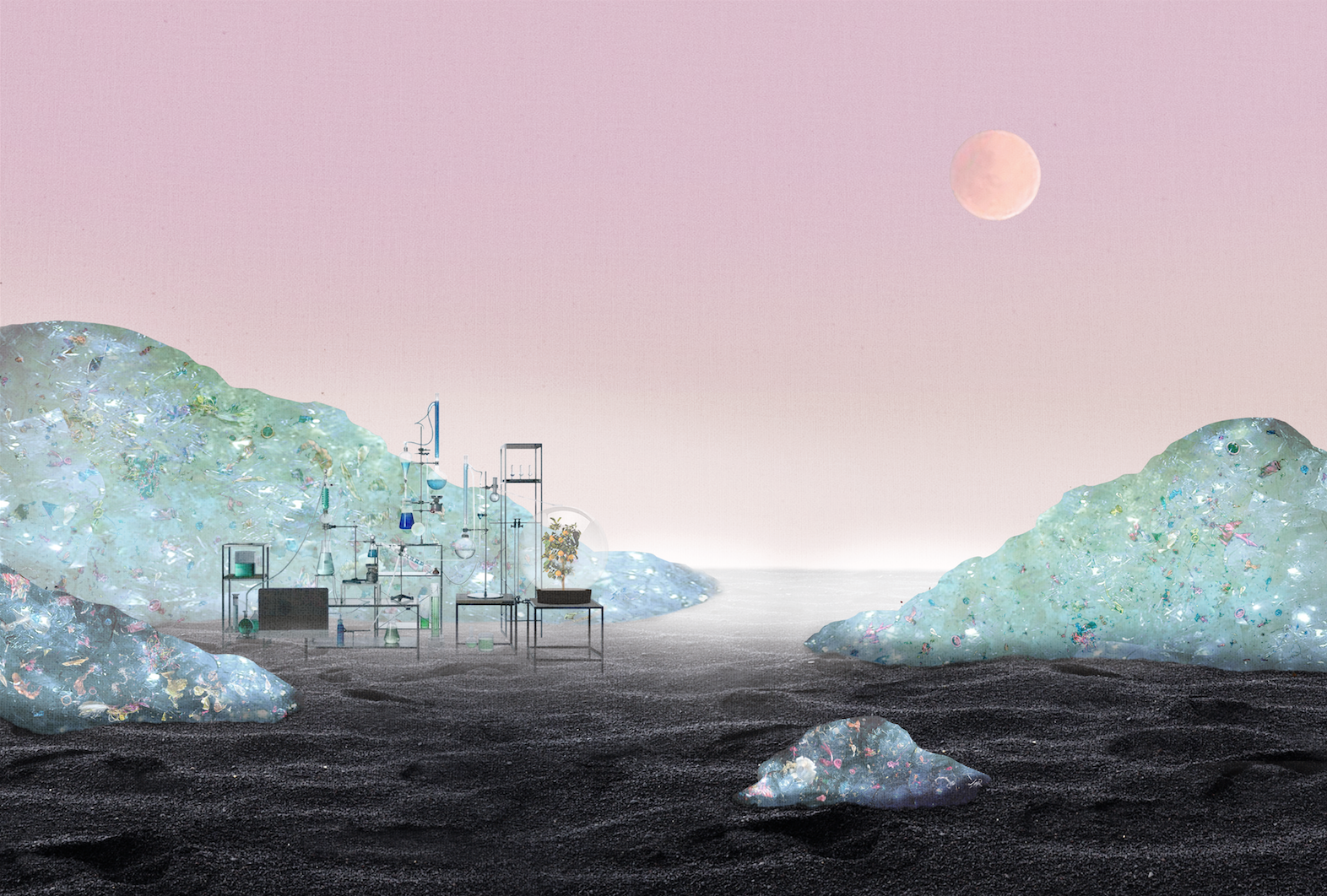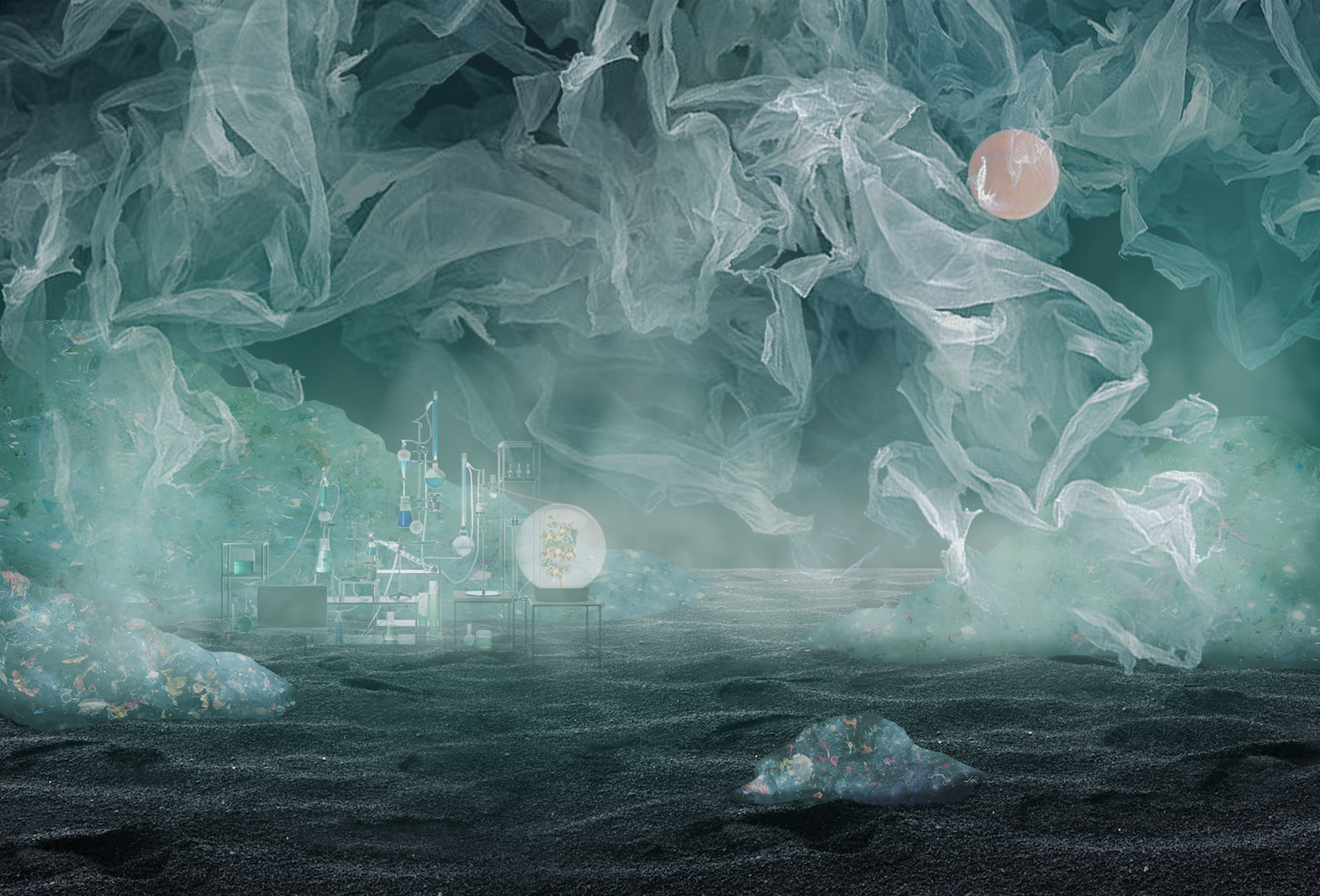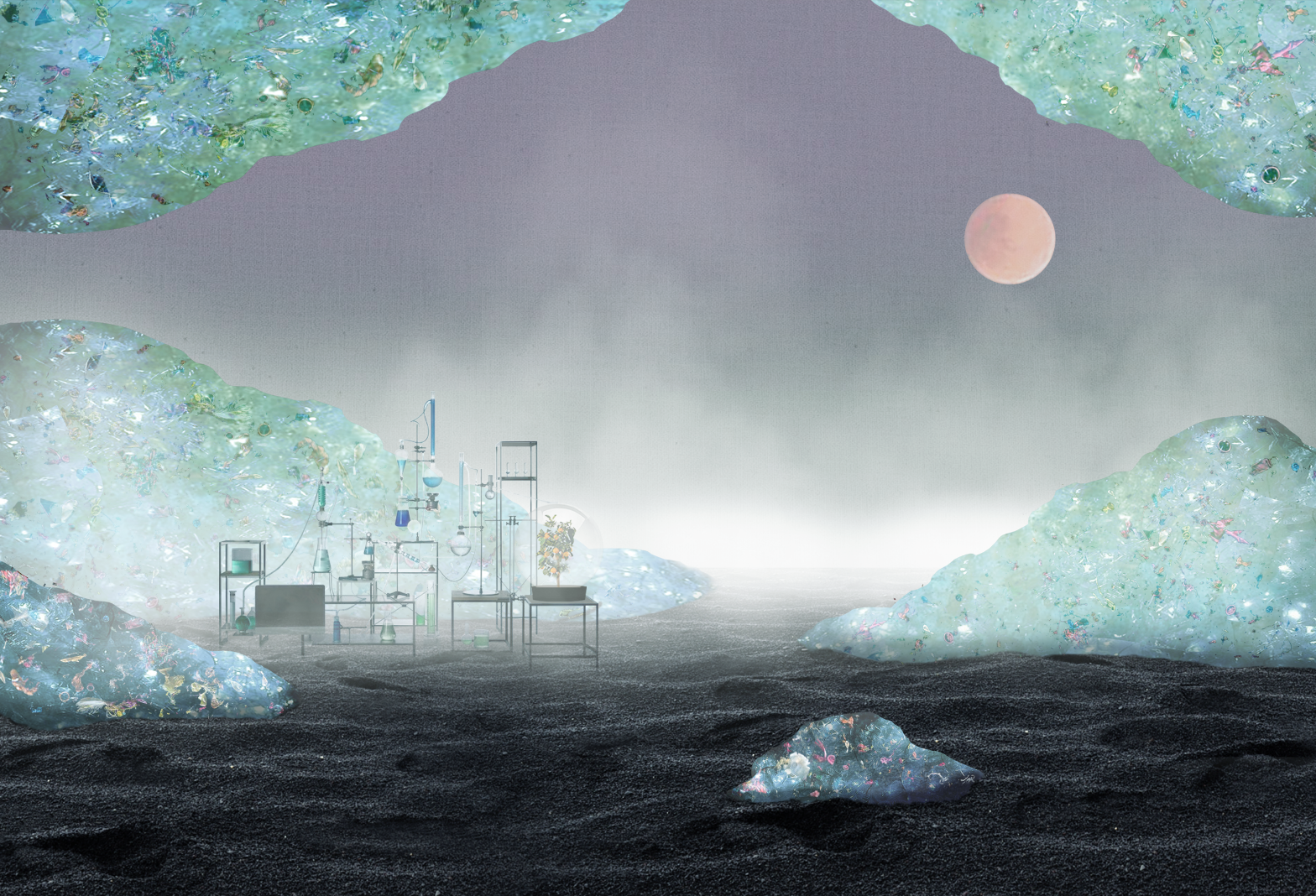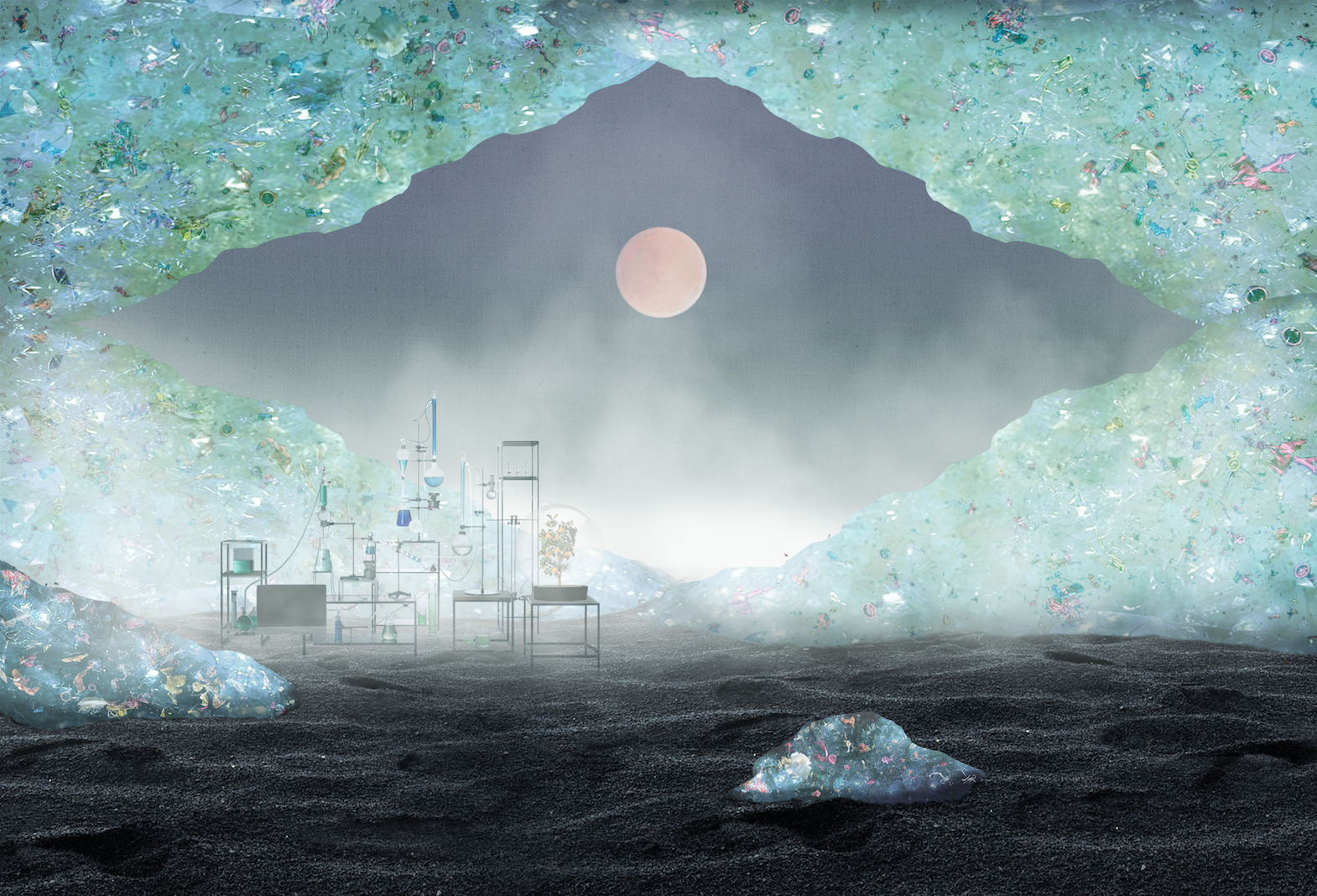THE TEMPEST - WILLIAM SHAKESPEARE - STAGE DESIGN
I find it interesting to speculate about the man-made material that begins to function independently, gets out of control, and becomes a real danger to its creator. Such a phenomenon is already taking place nowadays to a certain extent. Garbage clusters in seas and oceans, and microplastics found in bodies of dead animals are good examples. The concept for the scenography refers to the Great Pacific Garbage Patch. It is a dark vision of the artificial man-made material gaining geomorphological abilities. It accumulates and transforms to shape substantial landscape forms. Islands built of polymeric matter. The place of action is a peculiar island, an isolated space driven by its own rules, outside of human influence. This island, as a potential utopia, is a chance to create a new order of reality. I approach Shakespeare’s text as an invitation to reflect on the dominant role of humans in a broader and very primal context - as creatures situated at the top of the evolutionary hierarchy. Does biological domination give the right to colonize nature and profit from it regardless of the consequences? Where does the value system of endless production and profit lead to? In the era of the ecological crisis, which is a terrifying consequence of aggressive industrial activities, we slowly realize the great danger of thinking that homo sapiens is the privileged species and thus it is allowed to exploit Earth’s resources without limit.
At first glance, the scenery does not resemble any real place. It appears to be a psychedelic land, a peculiar zone, an alien planet, or a post-apocalyptic scene. It affects very intensively senses of the viewer. It is beautiful and intriguing, however, it contains something sinister. Prospero guides the survivors through this wonderland, which slowly transforms, mutates, and eventually collapses, revealing the true nature of a landfill. Together with the landscape, characters are being transformed, after experiencing surreal situations arranged by Prospero. The psychedelic island affects the survivors, driving them to the edge of madness. During the performance, the viewer realizes that the island is a silent protagonist. It is a place where unwanted waste has been accumulated, a by-product of destructive human activity. The plastic bottle is a powerful contemporary symbol of unrestrained production and consumerism. Multiplied, crushed, and illuminated, it becomes a beautiful abstract sculptural form with a double meaning. Its negative reference is not readable at first glance.
In the last scene, Prospero reveals himself to the survivors. The theatrical illusion is interrupted by technical lights turned on. The whole scenery changes dramatically, we can see a dark, dirty-gray cluster of trash. A circular element hanging above the stage is moving like a clock pendulum. As Prospero delivers the epilogue speech, all characters collectively clean up the stage from the trash at a slow pace in the act of reconciliation.
